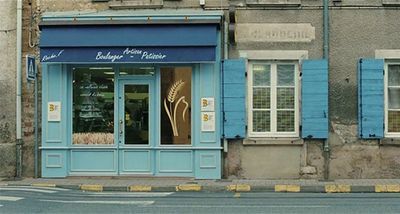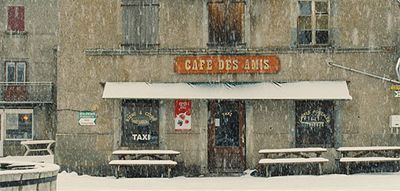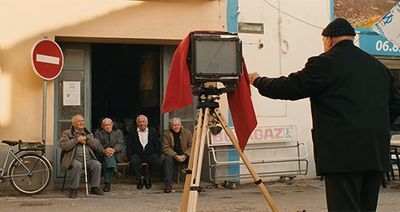On the road with Raymond Depardon
By ADRIAN TAHOURDIN
The ICA (Institute of Contemporary Arts, as it’s not generally known) has always struck me as being incongruously located: an oasis of hipness and cool within a stone’s throw of the Admiralty Arch, Buckingham Palace and the Foreign Office. Just up the steps are Pall Mall and London’s clubland. Its art displays, meanwhile, echo those of the Mall Galleries next door. To feel truly comfortable there you probably need to be well up on your Baudrillard and Fredric Jameson.
It’s currently screening a series of documentaries in its bijou cinema (next week The Armstrong Lie by Alex Gibney, about the disgraced multiple Tour de France winner, and on February 20 ninety bracing minutes of Gore Vidal). This week it was the turn of the French documentary filmmaker and photographer Raymond Depardon who packed his box camera into a large van and set off to parts of the country, such as the Meuse, that he claimed he scarcely knew.
Born in 1942, Depardon has tended to work with his wife Claudine Nougaret, a producer and sound engineer. Depardon has filmed a lot abroad and the 100-minute Journal de France (2012) slightly belied its title by splicing footage from, among other places, Caracas, Venezuela, in 1963, during street protests, brutal mercenary action in Chad, a flag day parade in the newly independent Central African Republic, with the head of state Bokassa looking on proudly (he later declared himself emperor). How, the viewer wonders, did Depardon manage to position himself in the midst of the parade, so that the marchers have to walk round him?
Appropriately we are also granted access to Valéry Giscard d’Estaing who was once involved with Bokassa in some business involving diamonds (anyone remember that?). We see Giscard discussing his presidential campaign with his subordinates, telling them that, having won the first round, the secret is to say nothing and do nothing before the second and concluding round of voting. He won of course.
Jacques Chirac, meanwhile, sports some impressive facial furniture. Did he subsequently have laser eye surgery or did he take to contact lenses? In all his time as president I don’t recall ever seeing him wear glasses. Looking at footage of street scenes from the 60s, I’m struck by just how many people are wearing glasses (and by Depardon’s ability to keep his camera trained on people who are clearly not happy about being filmed or photographed).
But there is real charm in his work too, not least when he parks the van on the side of the road, sets up his camera and waits for the coast to clear before clicking (how familiar is that feeling: waiting for the intended scene to be clear of cars and people before taking one’s peerless shot?) Maybe it’s just my overwhelming Francophilia but I love ordinary scenes like the one above, in which the subjects reckon they've been sitting there for several decades. They probably have – and why wouldn't they?
Peter Stothard's Blog
- Peter Stothard's profile
- 30 followers






